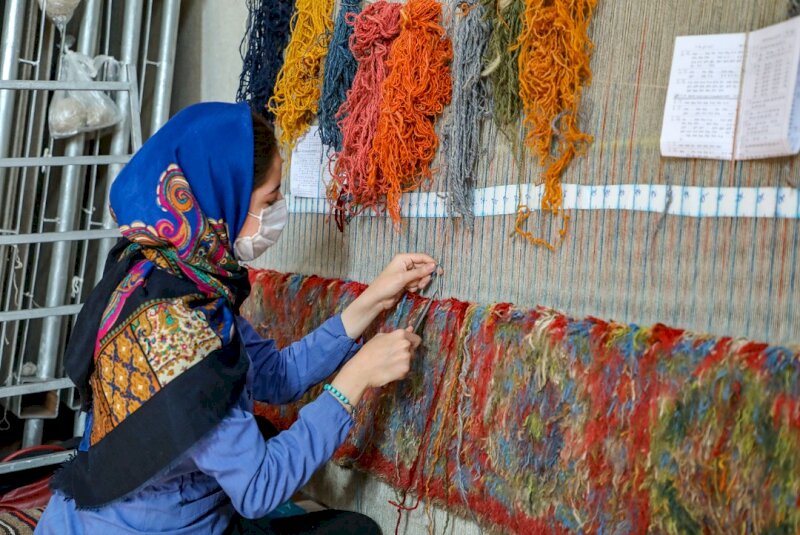Over 800 people trained as crafters in Ardabil

TEHRAN –Over 800 people have been trained as crafters in the northwestern Ardabil province during the first nine months of the current Iranian calendar year (March 21-December 21), a local tourism official has announced.
“A total of 850 people attended short-term handicraft training courses in Ardabil during the first nine months of the year,” Tohid Delavar Qavam said on Tuesday.
Increasing educational programs and training courses are important measures to improve the quality and quantity of handicraft products, the official added.
Back in December, the official announced that the handicrafts sector has generated a total of 670 job opportunities across the province during the first nine months of the year.
Recently, 18 high-quality works by artisans in the province were awarded the National Seal of Excellence, which illustrates the expertise and power of the province’s artisans in this sector, the official added.
Back in July, local officials announced that some 835 jobs are expected to be created in Ardabil by several investments in tourism-related projects, which are estimated to get off the ground by the end of the current Iranian year 1400 (ends in March 2022).
Back in January, the provincial tourism chief, Nader Fallahi, announced that more than 150 tourism-related projects are underway across Ardebil province. The mentioned projects will prepare the province’s tourism sector for the post-coronavirus era when the number of tourists and travelers is expected to rise magnificently, the official added.
Sprawling on a high, windswept plateau, Ardabil is well-known for having lush natural beauties, hospitable people, and its silk and carpet trade tradition. It is also home to the UNESCO-registered Sheikh Safi al-Din Khanegah and Shrine Ensemble.
The province is very cold in winter and mild in summer, attracting thousands every year. The capital city of Ardabil is usually recorded as one of the coldest cities in the country in winter.
Wide-ranging handicrafts
With 14 entries, Iran ranks first globally for the number of cities and villages registered by the World Crafts Council, as China with seven entries, Chile with four, and India with three ones come next.
In January 2020, the cities of Shiraz, Malayer, and Zanjan and the village of Qassemabad were designated by the WCC- Asia Pacific Region, putting Iran’s number of world crafts cities and villages from ten to 14.
Shiraz was named a “world city of [diverse] handicrafts”. Malayer was made a global hub for woodcarving and carved-wood furniture. Zanjan gained the title of a “world city of filigree”. And Qassemabad village, which is nationally known for its traditional costumes, was also promoted to a world hub of handicrafts. Chador Shab, a kind of homemade outer garment for women, was, however, the main subject for the WCC assessment for the village.
The value of Iran’s handicrafts exports stood at $120 million during the first eleven months of the past Iranian calendar year 1399 (March 20, 2020 – February 18, 2021), Mehr reported. The country’s handicrafts exports slumped during the mentioned months in comparison to the same period last a year earlier due to the damage the coronavirus pandemic has inflicted on global trade.
The Islamic Republic exported $427 million worth of handicrafts during the first eleven months of the calendar year 1398. Of the figure, some $190 million was earned via suitcase trade (allowed for customs-free and tax-free transfer) through 20 provinces, according to data compiled by the Ministry of Cultural Heritage, Tourism and Handicrafts.
Ceramics, pottery vessels, handwoven cloths as well as personal ornamentations with precious and semi-precious gemstones are traditionally exported to Iraq, Afghanistan, Germany, the U.S., the UK, and other countries.
ABU/
Leave a Comment